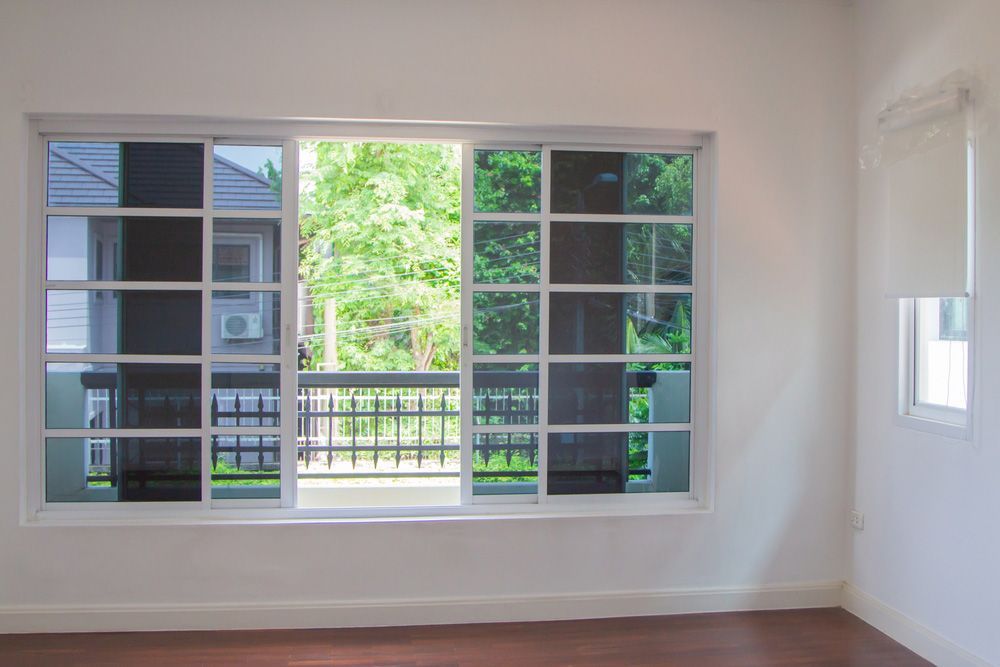Posted by: Solarmaster Brisbane
September 9, 2024
Categories: Blog
The Science Behind Window Tinting: How It Works
On a hot summer day, sunlight streaming through windows can significantly raise indoor temperatures, increasing glare and putting added strain on air conditioning systems. Many homeowners face this challenge. Fortunately, window tinting offers an effective solution. But how exactly does this often-overlooked feature enhance comfort and energy efficiency in the home?
In this blog, we’ll delve into the science of window tinting, explaining how it works to block heat and shield against harmful UV rays.
The Physics Behind Heat Rejection in Window Tinting
Window tinting may seem simple, but its science is intriguing. Solar radiation, which includes visible light, ultraviolet (UV) rays and infrared (IR) heat, contributes to the warming of your home. Window films block some of this radiation, reducing heat transfer through the glass.
Here’s how it works:
- Infrared rejection: Specialised window films are engineered to reflect and absorb infrared rays carrying the most heat. This helps lower the heat entering your home, keeping the interior cooler.
- Heat absorption & dissipation: Some films absorb solar energy and dissipate it back into the environment, preventing the glass from transmitting too much heat indoors.
- Reflective coatings: Many window films have a reflective coating that bounces sunlight away from the window, further reducing heat build-up.
Blocking UV Rays: How Window Tinting Protects Interiors & Health
One key benefit of window tinting is its ability to block harmful UV rays. UV radiation can cause various problems, from fading furniture and flooring to increasing the risk of skin cancer.
Here’s how window tinting protects you:
- UV ray blockage: High-quality window films can block up to 99% of UV rays, significantly reducing exposure to these harmful wavelengths.
- Interior protection: Blocking UV rays helps protect your home’s interior. Items like carpets, curtains, furniture and artwork are vulnerable to sun damage over time. With window tinting, you can keep your belongings looking fresh and new for longer.
- Health benefits: Prolonged exposure to UV rays, even through windows, can contribute to skin ageing and increase the risk of skin cancer. Window tinting offers an additional layer of protection for you and your family.
Energy Efficiency Through Window Tinting: The Scientific Approach
When it comes to energy efficiency, window tinting can play a crucial role in reducing your energy consumption. By reducing the heat entering your home, your cooling systems won’t have to work as hard, ultimately saving you money on your energy bills.
Here’s the scientific breakdown:
- Reduced solar heat gain: By blocking or reflecting a significant amount of solar radiation, window films lower the overall heat gain through windows.
- Insulating properties: Some window films also provide a degree of insulation, preventing heat loss during colder months, making them beneficial year-round.
- Lower cooling costs: With less heat entering your home, your air conditioning doesn’t need to run as often, which can lead to noticeable reductions in your energy bills.
Visible Light Transmission (VLT) & Its Role in Window Tinting
Visible light transmission (VLT) refers to the amount of visible light that passes through your windows. VLT is an essential factor in window tinting as it influences the amount of light entering your home and how you can see outside:
- High VLT films: These allow more natural light to enter your home while blocking UV and infrared radiation. They are ideal for rooms with plenty of daylight without heat or UV exposure.
- Low VLT films: These films are darker, offering more privacy and glare reduction, making them perfect for rooms where light levels need to be controlled.
How Professional Installation Ensures Optimal Film Adhesion
While DIY window tinting kits are available, professional installation is crucial to ensure the film adheres correctly and performs optimally. Improper installation can lead to bubbling, peeling and reduced efficiency.
Here’s what professional installation offers:
- Expert preparation: Professionals will thoroughly clean your windows to remove any dirt or residue that could affect adhesion.
- Precise application: Applying window film without creases or air bubbles requires skill and experience, which professionals have.
- Correct curing: After installation, the film needs time to properly cure and properly bond to the glass. A professional installer ensures this process goes smoothly.
Ceramic Window Films: Advanced Heat & UV Rejection Technology
Ceramic window films are at the cutting edge of window tinting technology. Unlike traditional films, ceramic films contain non-metallic, non-conductive ceramic particles that offer superior performance without compromising visibility.
- Advanced heat rejection: Ceramic films block more infrared heat than standard films, keeping your home cooler in extreme temperatures.
- Superior UV protection: They provide almost complete UV ray blockage, offering the highest level of protection for your home and family.
- No signal interference: Unlike metallic films, ceramic films won’t interfere with electronic signals like mobile phone reception or Wi-Fi.
Get in Touch for Professional Window Tinting in Brisbane
At Solarmaster, we understand the unique challenges faced by homeowners. Our team offers home and commercial window tinting in Brisbane, designed to improve your home’s comfort and energy efficiency. Ready to experience the benefits of house window tinting in Brisbane for yourself? Contact us today to learn more about how we can help.








